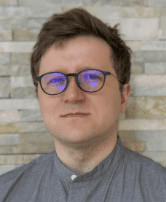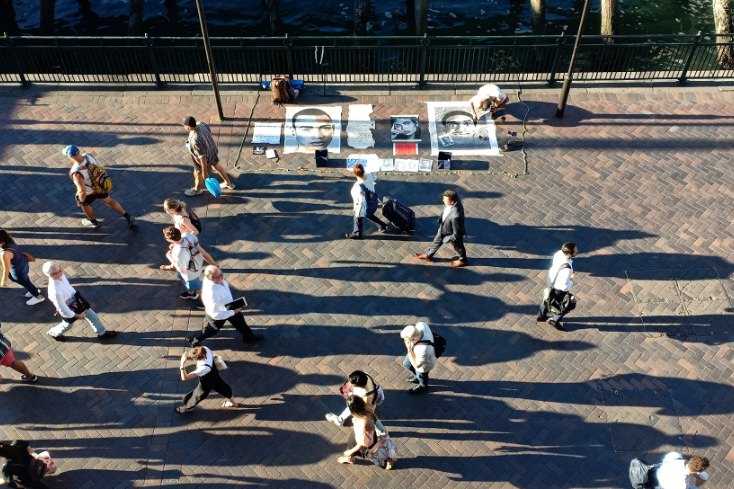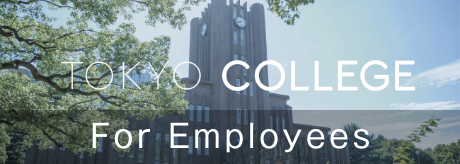- HOME
- Understanding Cities
Understanding Cities
A city is a complex and dynamic system. It comprises the built environment, the natural environment, and human society. Understanding cities thus necessitates interdisciplinary perspectives from urban planning, sociology, history, ecology, the economy, the arts, and beyond. Understanding cities takes various approaches. One of which is the act of a flâneur’s walk: an intentional/ unintentional walking through the cities in order to observe, question, and engage with complex issues of the cities. This online exhibition showcases the flâneur viewpoints of the Tokyo College researchers and the "Understanding Cities" class students.
Dr. Rosita SAMSUDIN & Dr. Marcin P. JARZEBSKI
Researcher

Maria TELEGINA
Hiroshima.
I believe understanding cities is always a dialogue.
We make the cities we live in.
The cities we live in make us who we are.
2022.8.1
Researcher

Yuki TERADA
Harmony and Discord
Tehran, the capital of Iran, is a metropolis of over 8 million people.
Murals on the densely packed rows of buildings serve as canvases to reflect various aspects of politics and culture.
The combination of the portrait of the late Ruhollah Khomeini returning from exile on 1 February 1979, the trees planted to mitigate air pollution, and the buildings under construction competing for space create feelings of harmony and discord.
2022.8.1
Researcher

Hannah DAHLBERG-DODD
(Re)built to Vehicular Scale
Atlanta is one of many US cities that underwent drastic redevelopment in the mid-20th century as a result of the Interstate highway system.
Neighborhoods of poorer people of color were bulldozed for highways to carry wealthier white families to car-dependent suburbs while pedestrian and mass transit infrastructure in these hollowed-out cities was allowed to degrade.
Cities now sprawl in all directions, inaccessible to those without costly private vehicles.
2022.8.1
Researcher

Naoko HOSOKAWA
Borderland City
Cities in borderland regions tell us many things about identity.
This is a bridge over the Rhine River between two cities, Strasbourg, France and Kehl, Germany.
Here, 'bridging two countries' is not only a metaphor but a reality.
This draws an interesting comparison with the idea of 'overseas', 'over the sea' in Japan, where going abroad often involves a rather lengthy airplane journey.
2022.8.1
Researcher

Rosita SAMSUDIN
A city for lovers and friends
Lewis Mumford once said, “Forget the damned motor car and build cities for lovers and friends.” (My Works and Days, 1979).
Contemporary cities often equate growth with infrastructure development and shun people from the equation. Whilst unpretentious, the public acts of claiming the city’s everyday spaces manifest the nature of people as social beings, hankering for social connections. An appeal to urbanizing cities: can we build more people-centric urban spaces?
2022.8.1
Researcher

Marcin Pawel JARZEBSKI
The city through our window
Many of us have been restrained or have had limited opportunities to go out since the beginning of the COVID-19 pandemic.
The city became the view from our window and our balconies became our private greenspace.
2022.8.1
Researcher

Mark BOOKMAN
Accessibility
Accessibility is a fundamental feature of contemporary cities.
To live independently in society, people must have access to built environments, education, employment, entertainment, and healthcare.
However, such services are not evenly distributed among urban centers, and individuals from diverse backgrounds are often excluded.
To make our cities socially, politically, and financially sustainable, we must strive to improve accessibility for everyone regardless of age, disability, or other identities.
2022.8.1
LinkResearcher

Marcin Pawel JARZEBSKI
Biophilia
The biophilia hypothesis says that people have a natural need to interact with nature and other living things.
A picture of a container garden on a vacant lot in front of a house (Taito Ward, Tokyo)
2022.8.1
Student
Takumi HOSHINO
2nd Year, Humanities and Social Sciences II, College of Arts and Sciences Junior Division, The University of Tokyo
Fake 'civic pride’
Photographs taken by residents of Makuhari Bay Park, showing the splendour of Makuhari, are posted on a fence at the construction site.
There is a movement to involve residents in a community-building organisation in this new residential area.
Even though putting up these photos can help residents feel better and cultivate a lively community, it can also make people feel satisfied with the superficial identity of the city, thus, there could be a risk of making people feel reluctant to build a real identity and civic pride.
2022.8.1
Student
Yuichiro MORIYASU
2nd Year, Humanities and Social Sciences Ⅲ, College of Arts and Sciences Junior Division, The University of Tokyo
Charmed by the chime
In Asakusa, many stores display their products on the street to attract tourists and increase their sales floor space.
This souvenir shop in the Nakamise shopping arcade hangs wind chimes from the eaves to attract the attention of passersby, not only as merchandise, but also to attract tourists with the chime sound on the bustling streets.
2022.8.1
Student
Tsukasa TAWARA
2nd Year, Natural Sciences III, College of Arts and Sciences Junior Division, The University of Tokyo
Night at Asakusa
This is a photo taken in the middle of the night on Nakamise-dori, the traditional shopping street, in front of the Sensoji temple in Asakusa.
There are almost no tourists, but it shines with a brightness that recalls the prosperous days before the COVID-19 pandemic.
Also, the reflection of the pharmacy sign at the end of the shopping street shows how old and new businesses coexist in Asakusa.
2022.8.1

Understanding Cities
A city is a complex and dynamic system. It comprises the built environment, the natural environment, and human society. Understanding cities thus necessitates interdisciplinary perspectives from urban planning, sociology, history, ecology, the economy, the arts, and beyond. Understanding cities takes various approaches. One of which is the act of a flâneur’s walk: an intentional/ unintentional walking through the cities in order to observe, question, and engage with complex issues of the cities. This online exhibition showcases the flâneur viewpoints of the Tokyo College researchers and the "Understanding Cities" class students.
Dr. Rosita SAMSUDIN & Dr. Marcin P. JARZEBSKI
Hiroshima.

I believe understanding cities is always a dialogue.
We make the cities we live in.
The cities we live in make us who we are.
2022.8.1
Researcher

Maria TELEGINA
Harmony and Discord

Tehran, the capital of Iran, is a metropolis of over 8 million people.
Murals on the densely packed rows of buildings serve as canvases to reflect various aspects of politics and culture.
The combination of the portrait of the late Ruhollah Khomeini returning from exile on 1 February 1979, the trees planted to mitigate air pollution, and the buildings under construction competing for space create feelings of harmony and discord.
2022.8.1
Researcher

Yuki TERADA
(Re)built to Vehicular Scale

Atlanta is one of many US cities that underwent drastic redevelopment in the mid-20th century as a result of the Interstate highway system.
Neighborhoods of poorer people of color were bulldozed for highways to carry wealthier white families to car-dependent suburbs while pedestrian and mass transit infrastructure in these hollowed-out cities was allowed to degrade.
Cities now sprawl in all directions, inaccessible to those without costly private vehicles.
2022.8.1
Researcher

Hannah DAHLBERG-DODD
Borderland City

Cities in borderland regions tell us many things about identity.
This is a bridge over the Rhine River between two cities, Strasbourg, France and Kehl, Germany.
Here, 'bridging two countries' is not only a metaphor but a reality.
This draws an interesting comparison with the idea of 'overseas', 'over the sea' in Japan, where going abroad often involves a rather lengthy airplane journey.
2022.8.1
Researcher

HOSOKAWA Naoko
A city for lovers and friends

Lewis Mumford once said, “Forget the damned motor car and build cities for lovers and friends.” (My Works and Days, 1979).
Contemporary cities often equate growth with infrastructure development and shun people from the equation. Whilst unpretentious, the public acts of claiming the city’s everyday spaces manifest the nature of people as social beings, hankering for social connections.
An appeal to urbanizing cities: can we build more people-centric urban spaces?
2022.8.1
Researcher

Rosita SAMSUDIN
The city through our window

Many of us have been restrained or have had limited opportunities to go out since the beginning of the COVID-19 pandemic.
The city became the view from our window and our balconies became our private greenspace.
2022.8.1
Researcher

Marcin Pawel JARZEBSKI
Accessibility

Accessibility is a fundamental feature of contemporary cities.
To live independently in society, people must have access to built environments, education, employment, entertainment, and healthcare.
However, such services are not evenly distributed among urban centers, and individuals from diverse backgrounds are often excluded.
To make our cities socially, politically, and financially sustainable, we must strive to improve accessibility for everyone regardless of age, disability, or other identities.
2022.8.1
LinkResearcher

Mark BOOKMAN
Biophilia

The biophilia hypothesis says that people have a natural need to interact with nature and other living things.
A picture of a container garden on a vacant lot in front of a house (Taito Ward, Tokyo)
2022.8.1
Researcher

Marcin Pawel JARZEBSKI
Fake 'civic pride’

Photographs taken by residents of Makuhari Bay Park, showing the splendour of Makuhari, are posted on a fence at the construction site.
There is a movement to involve residents in a community-building organisation in this new residential area. Even though putting up these photos can help residents feel better and cultivate a lively community, it can also make people feel satisfied with the superficial identity of the city, thus, there could be a risk of making people feel reluctant to build a real identity and civic pride.
2022.8.1
Student
Takumi HOSHINO
2nd Year, Humanities and Social Sciences II, College of Arts and Sciences Junior Division, The University of Tokyo
Charmed by the chime

In Asakusa, many stores display their products on the street to attract tourists and increase their sales floor space.
This souvenir shop in the Nakamise shopping arcade hangs wind chimes from the eaves to attract the attention of passersby, not only as merchandise, but also to attract tourists with the chime sound on the bustling streets.
2022.8.1
Student
Yuichiro MORIYASU
2nd Year, Humanities and Social Sciences Ⅲ, College of Arts and Sciences Junior Division, The University of Tokyo
Night at Asakusa

This is a photo taken in the middle of the night on Nakamise-dori, the traditional shopping street, in front of the Sensoji temple in Asakusa.
There are almost no tourists, but it shines with a brightness that recalls the prosperous days before the COVID-19 pandemic.
Also, the reflection of the pharmacy sign at the end of the shopping street shows how old and new businesses coexist in Asakusa.
2022.8.1
Student
Tsukasa TAWARA
2nd Year, Natural Sciences III, College of Arts and Sciences Junior Division, The University of Tokyo
TOP





